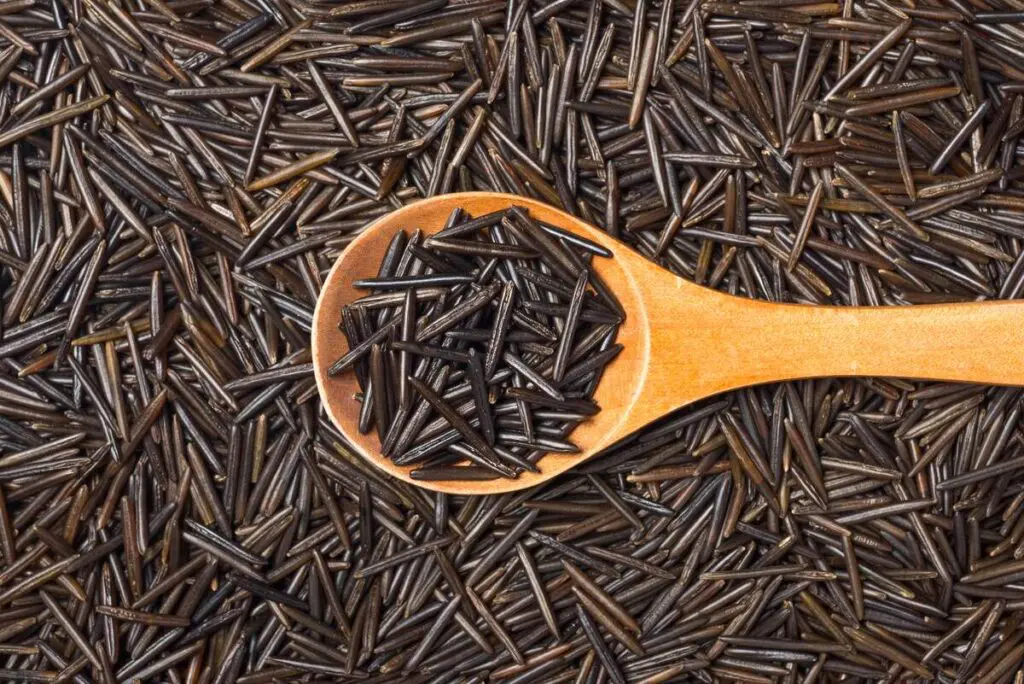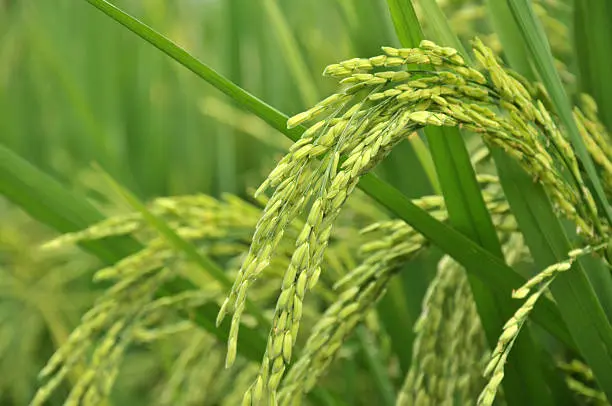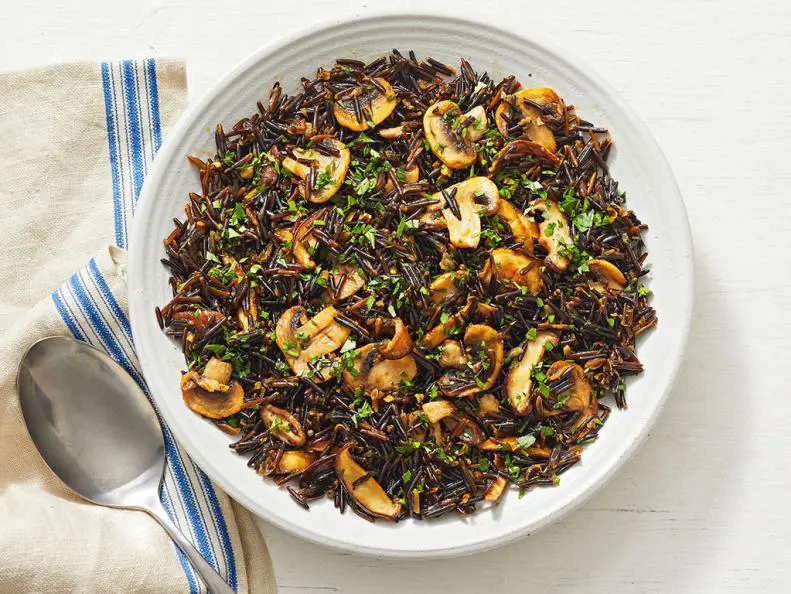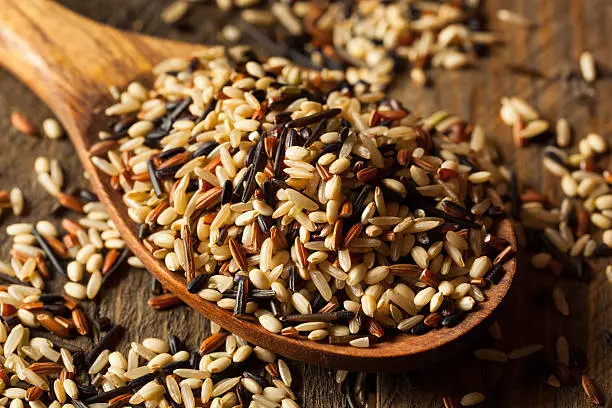It seems that almost every food item gets a time of special recognition. Most recently (September 9 – 15) it was wild rice’s turn in the spotlight as National Wild Rice Week was celebrated. It is not a food many folks eat often, but it is worth working it into one’s meal plan. In this article, we will explain why and, at the end, provide a link to a recipe you may wish to try. Minnesota is the largest producer of wild rice in the U.S., with both natural and cultivated wild rice beds. The lakes and rivers in northern Minnesota provide ideal growing conditions. Other northern-tier states and Canada also produce the grain.

Wild rice is a unique and nutritious grain that differs from common rice varieties in several ways. Here are some key points to know about wild rice:

1. Nutritional Benefits
- High Nutrient Content: Wild rice is rich in protein, dietary fiber, B vitamins, and minerals such as magnesium, phosphorus, and zinc.
- Low Calorie: It is lower in calories and higher in protein compared to white rice, making it a healthy option for various diets.
- Antioxidants: Wild rice contains antioxidants, which help in reducing inflammation and combating chronic diseases.
2. Culinary Uses
- Flavor and Texture: Wild rice has a nutty flavor and a chewy texture, making it a unique addition to various dishes.
- Versatility: It can be used in salads, soups, casseroles, pilafs, and even as a stuffing for poultry and vegetables.
3. Cultural Significance

- Indigenous Heritage: Wild rice holds significant cultural importance for Native American tribes, particularly in the Great Lakes region, where it is considered a sacred food.
- Traditional Harvesting: Harvesting wild rice is traditionally done by hand, using canoes and knocking the grains into the boat, a practice that is still followed by some communities today.
- Natural Stands: In places like Minnesota and Canada, wild rice is often harvested from natural stands in lakes and rivers. This involves traditional harvesting techniques.
- Paddy Fields: In California and some other areas, wild rice is grown in controlled paddy fields, similar to how conventional rice is cultivated. This method allows for more consistent and higher yields.
4. Environmental Impact
- Sustainability: Wild rice is a naturally occurring grain that supports local ecosystems and biodiversity. Sustainable harvesting practices help maintain these environments.
- Water Quality Indicator: The presence of wild rice in an area can indicate good water quality, as it requires clean water to thrive.
5. Market and Availability
- Price: Wild rice tends to be more expensive than common rice due to its labor-intensive harvesting process and limited growing areas.
- Availability: It is available in most supermarkets and health food stores, often found in the grains or organic sections.
Understanding these aspects can help people appreciate wild rice not only for its nutritional value but also for its cultural and environmental importance.Wild rice’s unique flavor and texture make it a versatile ingredient that pairs well with a variety of dishes. Here are some meal-pairing ideas:
1. Salads
- Wild Rice Salad: Combine cooked wild rice with ingredients like cranberries, almonds, diced apples, and a vinaigrette dressing for a refreshing and nutritious salad.
- Mediterranean Salad: Mix wild rice with chopped cucumbers, tomatoes, olives, feta cheese, and a lemon-oregano dressing.
2. Soups and Stews
- Chicken and Wild Rice Soup: A comforting soup made with chicken, vegetables, and wild rice. The rice adds a hearty texture and nutty flavor.
- Wild Rice and Mushroom Soup: Combine wild rice with a variety of mushrooms in a creamy broth for a rich and earthy soup.
3. Casseroles
- Wild Rice and Turkey Casserole: Perfect for using up leftover turkey, this casserole combines wild rice with turkey, vegetables, and a creamy sauce.
- Wild Rice and Broccoli Casserole: A vegetarian option that pairs wild rice with broccoli, cheese, and a breadcrumb topping.
4. Stuffed Vegetables
- Stuffed Peppers: Fill bell peppers with a mixture of wild rice, black beans, corn, and spices, then bake until tender.
- Stuffed Acorn Squash: Use wild rice as a stuffing for acorn squash, combined with cranberries, pecans, and sage.
5. Main Dishes
- Wild Rice Pilaf: A versatile side dish that can be paired with grilled chicken, fish, or roasted vegetables. Cook wild rice with onions, garlic, and broth, then add herbs and spices.
- Wild Rice and Salmon: Serve wild rice alongside baked or grilled salmon, with a side of steamed vegetables for a balanced meal.


Welcome to 3-Minutes A Day University, where you can learn a little about a lot of things every day in three minutes or less. We help you expand your knowledge and understanding of the real world, and 3-MAD University is tuition-free. Our wide-ranging syllabus includes a fascinating insight into topics including Health and Medicine, Science, Sports, Geography, History, Culinary Arts, Finance and the Economy, Music and Entertainment, and dozens more. You will impress yourself, your friends, and your family with how easy it is to learn facts and perspectives about the world around you. One topic you will never find covered is politics. We hope you enjoyed the previous three minutes. If you liked this post, please pass it along to a friend.
Was this email forwarded to you? Subscribe Here.
© Copyright 2024. 3-Minutes A Day University All Rights Reserved. Unsubscribe

